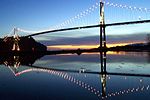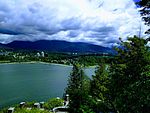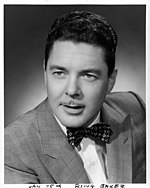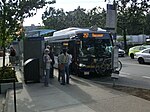X̱wemelch'stn
X̱wemelch'stn [χʷəməltʃʼstn], usually anglicized as Homulchesan, is a large community within the Squamish Nation of the Squamish people, who are a part of the Coast Salish ethnic and linguistic group. The name X̱wemelch'stn, translates to "Fast Moving Water of Fish", relating to the Capilano River. The village is one of the oldest and major villages of the Squamish and continues to be so, being the Squamish Nation's most populated reserve. The community is also known as the Capilano Indian Reserve, formally Capilano Indian Reserve No. 5, and is named like the adjacent Capilano River after the Capilano chieftaincy, the best-known Joe Capilano. The name Kiapila'noq means "people of Kiap", and was the title of the supreme chief of the Sḵwx̱wú7mesh in the area of English Bay. Chief George Capilano was the chief who met Captain Vancouver at X̱wemelch'stn in 1792, and had met Captain Cook in 1782.
Excerpt from the Wikipedia article X̱wemelch'stn (License: CC BY-SA 3.0, Authors).X̱wemelch'stn
Raindance Crescent, West Vancouver Park Royal
Geographical coordinates (GPS) Address Nearby Places Show on map
Geographical coordinates (GPS)
| Latitude | Longitude |
|---|---|
| N 49.316666666667 ° | E -123.13333333333 ° |
Address
Lions Gate Bridge
Raindance Crescent
V7P West Vancouver, Park Royal
British Columbia, Canada
Open on Google Maps









